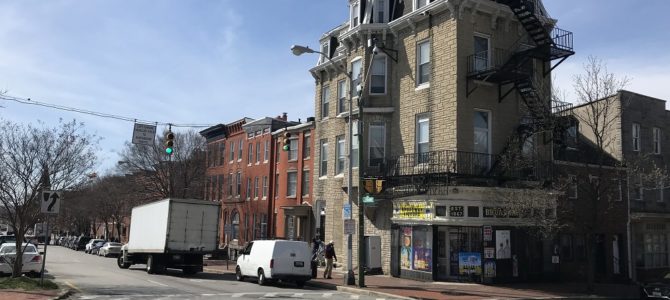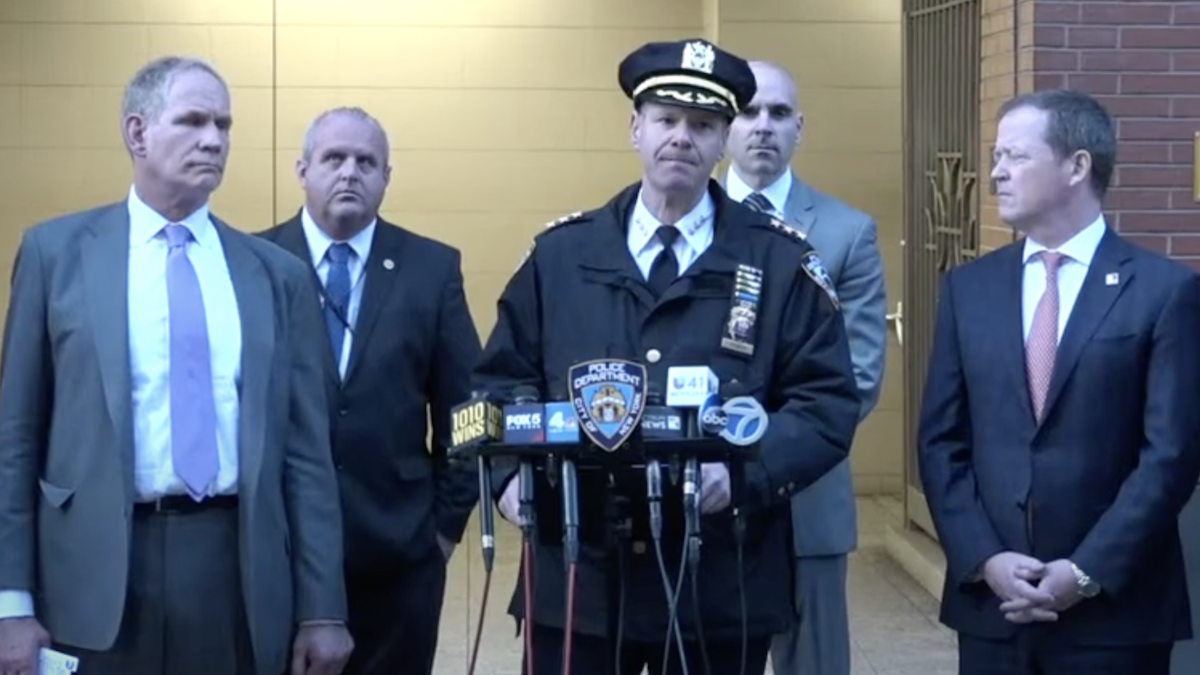
Many residential areas of Baltimore are controlled by groups of powerful gang members who rule over the people in their neighborhoods who abide by the laws of the state. In the absence of constant and visible police presence, this ruler-ruled dynamic can harden into a siege-like situation in which people live in constant fear and with curtailed mobility.
Such an environment provides the backdrop for a typical Baltimore scene: A brazen shooting takes place in broad daylight within sight and hearing of dozens of witnesses. But, somehow, no one “sees” or “hears” anything. And so it goes, week after week, year after year.
This isn’t the worst such situation that ever was. When I consider lawlessness, gangsterism, and mayhem in all its negative glory, my imagination wanders to ponder the experience of Sicily. So many legendary films, television shows, and news accounts have trained us to think of the island as a haven for urban gangsters and rural dons.
For centuries, Sicily was known as a land where justice administered by the government barely existed, and the populace had adopted, by necessity, the rigid, secretive, honor-bound code of the criminal underworld. Every interaction was personal. Perpetual offenses and vengeances tussled in an endless cycle of vendettas, large and small.
Things were at their worst in Sicily sometime about the middle of the 16th century. A new Spanish viceroy had gone to the island in a desperate attempt to stymie the all-out criminal warfare that plagued the cities and the countryside. His name was Juan de Vega.
After settling in and immersing himself in the mayhem, he came up with an idea: What if he were to empower witnesses to capital crimes with judicial powers? How could one go about maximizing and leveraging the courage of informants among the weak?
Empowering Witnesses
At the time, the number of law enforcement officers in all of Sicily about matched the number on Western District shift here in Baltimore on any given night. The judicial system, however, was not only intact but was multilayered and ubiquitous. De Vega reasoned that, if he conferred pardoning powers upon witnesses and informants, their value in the community would rise, and they would eventually assume a protected status.
Here’s how this worked: A witnesses B commit a murder. The judicial system bestows upon A “the right” to pardon C for an unrelated misdemeanor crime. This was not protection or hiding people away. Rather, the court literally “deputized” the witness, thus giving him power and status in the community (and in the legal system) that he didn’t have before.
In our common law legal system, which is even more flexible than the Roman law regime that prevailed in De Vega’s Sicily, we can conceive of this as a form of “microtribunal” based on certain novel jurisdictional ideas derived from medieval English law. In feudal times, myriad inferior courts existed throughout the kingdom that administered justice independent of any higher or broader bodies.
These ranged from manorial courts, where justice was administered on behalf of a baron concerning the affairs of an estate, to hundred courts, which judged the criminal actions that took place among groups of 100 families, to the Marshalsea Court, which settled disputes among royal domestic servants, to, finally, the Court of Pie Poudre (referencing the dusty feet of those who sought justice therein), the lowest and quickest court of all, and judge and judged were literally “peers.”
These courts, which are often called “franchise jurisdictions,” were created to dole out justice and preserve order at the most local level. Think of such a court in a small area, such as Sandtown here in west Baltimore, and apply De Vega’s template: A witness to, say, a gangland shootout receives jurisdiction instead of conventional protection or immunity.
In exchange for her testimony, she is sworn in as a magistrate of such a microtribunal. The city then cedes jurisdiction (from the circuit and district levels) over a selection of locally committed misdemeanors or felonies to this “court.” This “court” passes nothing on to higher courts (except on appeal, which would be on the basis of jurisdictional trespass). This puts maximum judicial power in the hands of a witnessing citizen and explicitly omits paternalistic oversight.
Establishing Authority
So the witness is no longer cowering and on the run. She has a gavel in her hand, and everyone in the neighborhood knows it. She’s earned this position on the basis of her successful testimony in the shooting case. Those in the area who believe that “snitches” should be punished have two options: 1) attack a sworn judicial official of the state or 2) accede to her authority by letting her dispense justice over unrelated (but hyper-local) matters.
In this manner, De Vega cleared entire Sicilian cities and areas of the countryside of gangsters and thieves because the informant transformed into a person of tangible influence in the community. How can a gang member target an individual who has the authority to reprieve members of his own “squad”?
Any state legislature could create such a body, just as the law has established traffic, juvenile, probate, and other courts in the past, so it’s certainly doable.
Eradicating Crime
I don’t know if Baltimore could actually set up such a system of witness protection, but I do know we’re in need of creative and novel solutions to this problem. Among the hundreds of examples, take the multiple shooting that took place on Ramsay Street here back on May 9, in which two toddlers were shot. Dozens of people saw the crime take place, but no one “witnessed” it.
Now, take this microtribunal system and employ it: A bystander comes forward with a description or a name. Localized government gives her judicial authority over another unrelated case involving a crime committed by a different person on the very same block. Upon being sworn in as a magistrate, this witness stands tall and strong in the community.
Obviously, the case would still have to be proven, and the possibility of false witnessing exists, but here’s the kicker: Dozens of neighbors witnessed the crime too. If everyone from the shooter to the senior citizen on the porch across the way know the culprit’s identity, all the power is in service of the witness who came forward and was sworn as a magistrate. Now the shooter would be confronting an officer of the court and not just a meek bystander.
As you may have noticed, the police departments don’t have a prominent role in this experiment, and the fact that a system of franchise jurisdiction can operate without a massive show of force is yet another recommending factor. All it would take is a functional city sheriff’s department (to supply bailiffs) and a modicum of political creativity. In a massive fulcrum move, the microtribunal concept shifts responsibility away from law enforcement and puts the weight onto our highly evolved legal system.
Such a thought experiment may seem wacky and unrealistic to you, but it operated at absolute street level in Spanish Sicily. What other sort of solution can you think of that executes justice at curb and stoop without armor and weapons?









